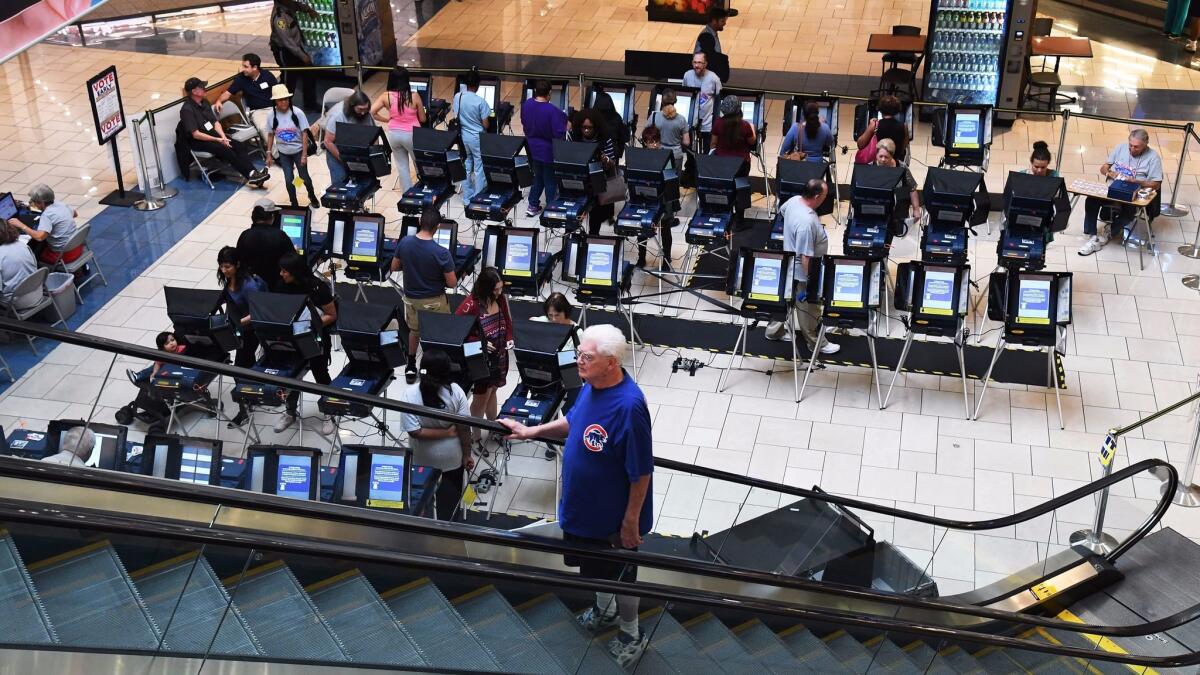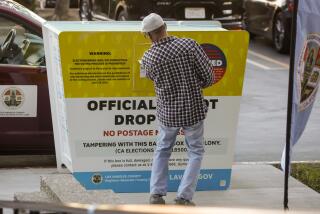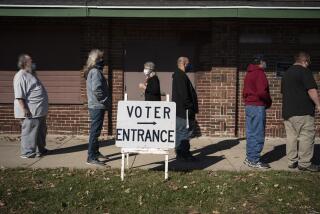Millions of people have voted, and Democrats are showing strong signs in key states

The millions of votes already cast in the presidential election show promising signs for Hillary Clinton, with Democrats registering a strong performance in key states such as Florida and Colorado.
But the early votes reveal bright spots for Donald Trump in the Midwest, potentially signaling a significant shift in the parties’ geographic bases that could linger past the election.
At least 15 million people have cast a ballot in the general election, according to University of Florida political science professor Michael McDonald, who tracks early voting data. About 40% of votes will be cast before election day.
With such high volumes of votes at stake, campaign operatives and political analysts have been poring over the data with Talmudic intensity, looking for any hints on how to readjust their outreach or recalibrate their spin.
“As the data starts to come in, you can see: are we hitting in certain places, are we not hitting our numbers in other places,” said Mark Stephenson, founder of Red Oak Strategic, an analytics firm that works with Republican clients. “We can see where we may need to shift resources.”
Early voting has increased overall compared with 2012 levels, McDonald said. The jump is most apparent in states that have favored Clinton in recent polls, he added, citing Nevada, Maine and even Texas, where polls have been surprisingly tight and early voting is up nearly 50% from the same point four years ago.
The actual tallies of how many votes have been cast for Trump or Clinton won’t be made public until the polls close on election day. But the early returns offer insight into who is voting, creating a larger picture of turnout by party affiliation, demographics and geography.
People obsess over early vote data in part because the returns offer the first sign this grueling election is drawing to a close, said Steve Schale, a Democratic strategist from Florida.
“You’ve got to be a masochist to think, ‘I want this to go on for another six months,’” said Schale. “It’s the first concrete thing we’ve had in a really long time” to predict the final outcome.
Early voting — either through mail-in ballots or in person prior to election day — has steadily grown in popularity in recent election cycles. Thirty-seven states now offer some form of early voting, according to the National Conference on State Legislatures; the remaining 13 require a reason for requesting an absentee ballot.
Data geeks rely on historical context to draw conclusions from the patchwork of returns being released across the country. In Colorado, for example, Democrats so far lead by 29,835 ballots, a far bigger lead than in past cycles, causing David Flaherty of the Republican-aligned firm Magellan Strategies to predict the beginnings of a Democratic wave.
“They’ve never had a lead like that,” said Flaherty, who is based in Colorado. “The trend has always been that Republicans vote earlier.”
In Florida, where more than 2.4 million people have already cast a ballot, accounting for about a quarter of the likely vote, analysts are looking to geography for clues on where the state is heading.
Schale, who helped fashion President Obama’s wins there in 2008 and 2012, pointed to high early vote levels in Broward and Dade counties in South Florida, the heart of the state’s Democratic base.
Strong turnout “in these two counties, where [Clinton’s campaign] invested a lot of time and built a strong organization, is a good sign,” Schale said.
He also said Democrats should be encouraged by relatively tight margins between the two parties in conservative-leaning Duval County, which includes the city of Jacksonville. Previous GOP winners in the state, such as George W. Bush, ran up major advantages there.
“Duval is performing much closer to the 2008 and 2012 models than where Trump needs to be,” Schale said.
There is good news for Trump in the Midwest, where early vote returns in Ohio and Iowa appear to favor Republicans.
In Ohio, where about half a million votes have been cast, turnout is down in key Democratic areas around Cleveland and Columbus.
And in Iowa, early vote levels are down from 2012, bucking the overall national trend of increasing early turnout. The drop-off appears to be due to fewer Democrats, who tend to be early voters in the state, showing up.
“Republicans are in a much more advantageous position in terms of their deficit than in years past,” said Stephenson, who ran Sen. Joni Ernst’s analytics operation in 2014.
Though Clinton is showing strength in previous Republican strongholds such as Arizona, the signs that Ohio and Iowa — both blue states in 2008 and 2012 — could flip to Republicans could point to a reshuffling of the political map, rather than an overwhelming Democratic wave.
“There could be a realignment happening of our politics. Appalachia and the Midwest may form the new base for the Republican Party,” McDonald said. “If that is true, our past history suggests that the parties are going to shift their policy stances to reflect their coalitions.”
Dips in turnout can be interpreted as a lack of enthusiasm for one candidate or another. But it may also be attributed to logistical barriers.
In North Carolina, for example, turnout among black voters, a core Democratic constituency, was down compared with 2012 levels. But analysts attributed that to a limited number of in-person polling places open in key counties; in-person voting sites dramatically increased in the state on Thursday.
There are some limitations to the clues that early vote returns can offer. Party affiliation does not necessarily represent how people actually voted, and the growing prevalence of Americans unaffiliated with a particular party adds another layer of complication.
“Donald Trump is not winning every Republican and Hillary Clinton is not winning every Democrat this cycle,” Stephenson said. “Just comparing these numbers one-to-one is not going to tell you where these candidates might stand.”
But for campaigns and outside analysts, early vote data — coupled with other metrics such as polling — can paint a fairly convincing picture of how this election will shake out.
“I look at poll averages as one indicator as to direction of election. The early vote is another indicator,” McDonald said. “When the two indicators are pointing in the same direction, it gives you more confidence about where the election is heading.”
Follow @melmason for the latest on national politics.
‘Till death do us part’ in life, but these married couples part ways at the ballot box
No, there is no evidence that thousands of noncitizens are illegally voting and swinging elections
UPDATES:
1:20 p.m.: This article was updated to include new nationwide early vote totals.
This article was originally published at 11:55 a.m.
More to Read
Get the L.A. Times Politics newsletter
Deeply reported insights into legislation, politics and policy from Sacramento, Washington and beyond. In your inbox three times per week.
You may occasionally receive promotional content from the Los Angeles Times.







